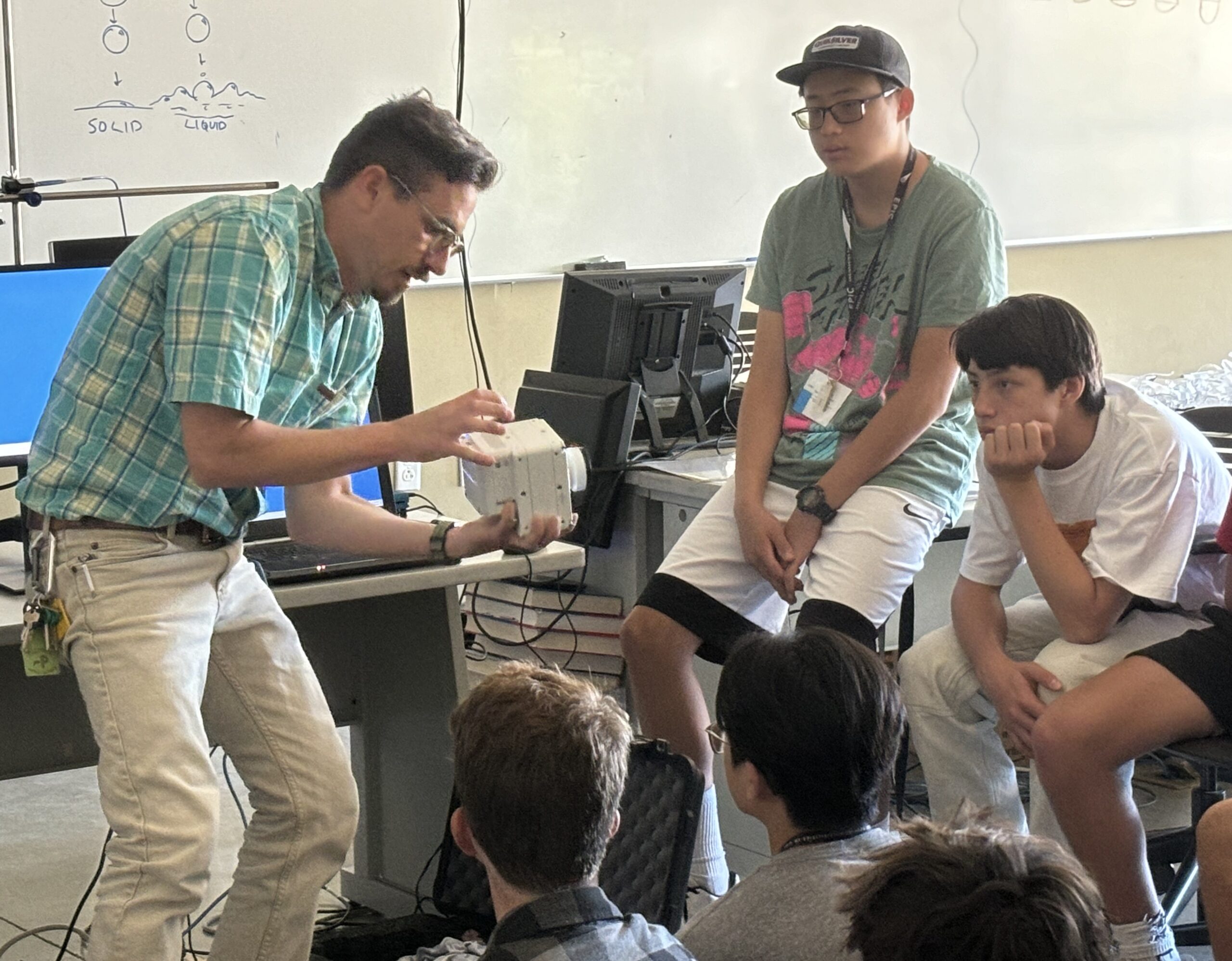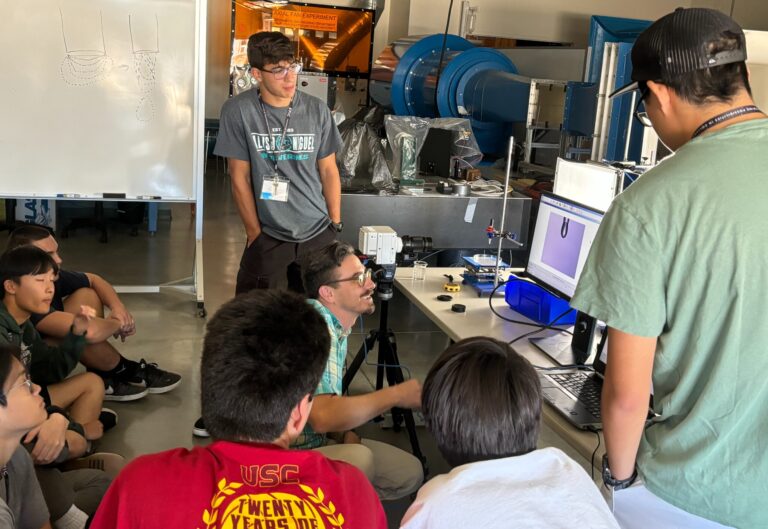High school and middle school students delved into the fascinating world of fluid dynamics under the guidance of mechanical engineering Assistant Professor Hans Mayer this summer as part of Engineering Possibilities in College – an outreach program designed to introduce young learners to engineering fields and campus life experiences.
Since 2016, EPIC has introduced over 5,000 students to engineering and Cal Poly through a series of one-week residential sessions. Mayer’s lab, “Observing Fluids in Motion with High-Speed Imaging: Popping Soap Films, Dripping Faucets and More,” was a highlight of this year’s offerings.
“The class I designed is intended to give high school students a chance to explore some everyday fluid dynamics phenomena in ways that promote the power of observation,” said Mayer, noting that these phenomena involve fluid-fluid interfaces, such as air and water, and can occur over various length scales ranging from centimeters to micrometers.

Over four days in the lab, students explored the formation of water droplets from the tip of an eyedropper, the splash of these droplets into a pool of water, and the turbulent and laminar flow of water from a small tube. Through high-speed camera imaging, they captured the intricate dynamics behind these seemingly familiar occurrences, such as the rapid retraction of popped soap films.
Observing these phenomena with the naked eye, a strobe light and a high-speed camera revealed distinct differences in appearance. Students were challenged to measure fluid properties like density and surface tension with basic equipment and to measure soap film thickness using optical techniques.
A standout of the class was the use of a Phantom high-speed digital camera, bought with funding from the National Science Foundation’s Engineering Research Initiation program. The camera allowed students to slow down the rapid disappearance of soap films, revealing that they indeed vanish in the blink of an eye. On the last day of the class, students worked in teams to design an experiment, using the high-speed camera to measure how fast a soap film retracts when popped, comparing their results to theoretical estimates.

Through hands-on experiments and group discussions, Mayer’s class offered a unique opportunity for students to engage with the complexity and beauty of fluid dynamics, inspiring them to consider careers in STEM.
“While there are broader impacts to the scientific community through research conferences and publications, I wanted to impact students who are not yet involved in engineering and science research and might be exploring their place in these fields,” he said. “EPIC provides the perfect outlet for this, enabling me to support the next generation of engineers.”
By Emily Slater


